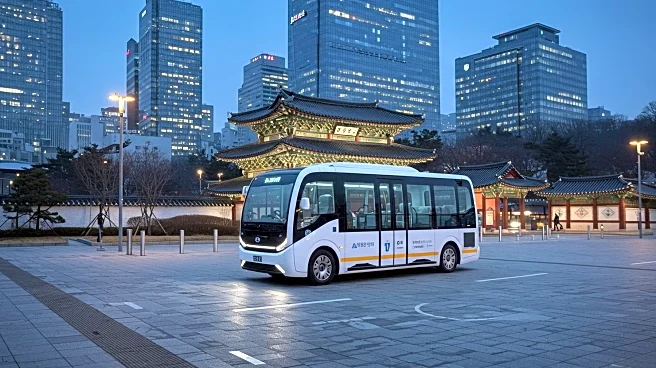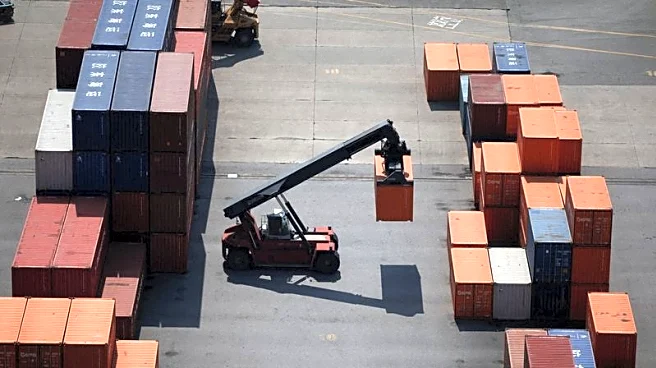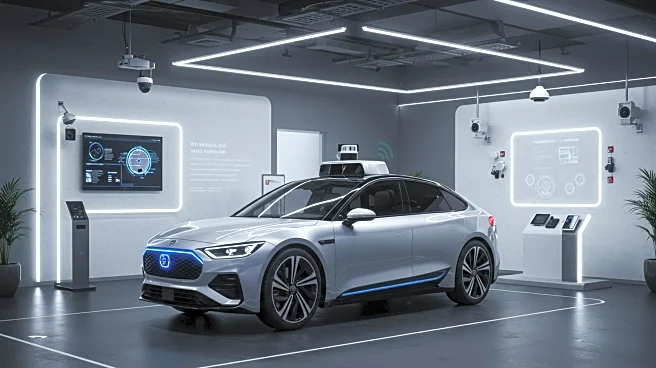What's Happening?
The Seoul Metropolitan Government has announced the upcoming launch of South Korea's first self-driving shuttle service, set to begin operations in late September. The service will feature two 11-seater shuttles operating on a 4.8-kilometer circular route from Cheonggye Plaza to Cheonggye 5-ga, a popular tourist area near Gwangjang Market. The shuttles will run on weekdays from 10 a.m. to 5 p.m., excluding weekends and public holidays when the roads are designated as car-free. Initially, the service will be free, with plans to transition to a paid model similar to other city buses. The shuttles are equipped with U-shaped seats, a large information screen, and a wheelchair lift, and will have a safety staff member on board. However, the staff will not be involved in driving, as the shuttles are fully autonomous.
Why It's Important?
The introduction of self-driving shuttles in Seoul represents a significant step forward in the adoption of autonomous vehicle technology in public transportation. This initiative is expected to enhance the city's tourism appeal by providing a novel and futuristic travel experience. Additionally, the project aims to revitalize the local economy around Cheonggyecheon by attracting more visitors. The success of this pilot program could pave the way for broader implementation of autonomous vehicles in urban settings, potentially reducing traffic congestion and lowering emissions. It also highlights South Korea's commitment to integrating advanced technology into everyday life, which could influence similar developments in other cities worldwide.
What's Next?
Following the initial launch, the Seoul Metropolitan Government plans to conduct safety verification tests to ensure the reliability and safety of the self-driving shuttles. There are also plans to extend the service to nighttime operations and longer routes, which could further increase its utility and appeal. The outcome of this pilot program will likely influence future transportation policies and the expansion of autonomous vehicle services in South Korea. Stakeholders, including technology developers, urban planners, and policymakers, will be closely monitoring the program's impact and public reception.












